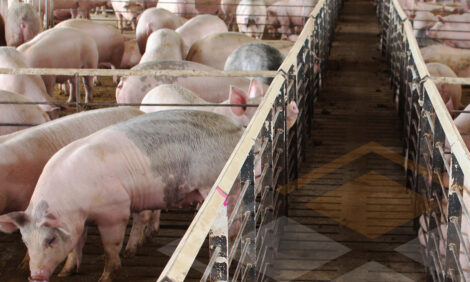



Emerging Patterns in the North American Pig Market
There is a widespread trend towards increasing numbers of pigs produced per sow. Ed Barrie, Sow Weaner Pig Specialist explains why and what impacts this may have on the North American pork market in the latest Pork News & Views newsletter from the Ontario Ministry of Agriculture, Food and Rural Affairs (OMAFRA).Through the period of depressed prices in the
hog industry in recent years, a significant trend
has emerged. The trend is toward increasing
numbers of pigs produced per sow. In itself,
this is not a new phenomenon. When people
are stressed to generate revenue they tend
to look more closely at what they are doing.
They start to question if they are doing tasks
correctly and they do spend more time and
attention to the details of getting things done.
Records are looked at a little more carefully
and sows producing fewer young than they
should be are often culled. Because cash–flow
is tight, often these culled animals are not
replaced as rapidly as they would be in more
affluent times. The net result of this action
is that there is more time available to carry
out the routine tasks of caring for the other
remaining animals in the herd. The consequences are that often total herd production
increases from a reduced number of sows.
This event is not new and has been occurring
as long as there have been hog cycles. It is the nature of pork producers to try to do a
little more with the same resources and as
long as production appears to be close to acceptable levels, the process continues.
What is
surprising this time is that, in some instances,
the sow herd has decreased up to four per cent but the
total pork produced has increased by over six per cent
on a year–over–year basis.
There are a number of reasons for this increase.
Developments in swine nutrition have addressed
past weaknesses and by rearranging nutritional
programmes such as rebalancing amino acids and
energy levels, we have clearly increased born
alive numbers and kept them alive through to
market weights.
Similarly, the genetics industry
has moved forward. Sow sizes have increased,
following increased nutritional knowledge and
sows are now able to produce larger litters of
robust healthy young animals. There have also
been improvements in semen handling, artificial
insemination techniques, and more time has
been spent in the delivering and management of
the newborns, to ensure their survival.
The Danes, in particular, have been leaders in
the management of highly prolific sows and
genetic programmes, while Canadian nutritional
research has contributed to the improved
performance of the sow herd. Thirty pigs
per sow per year was once considered to be
a wishful goal, and is now being repeatedly
achieved by large commercial units as well as by
smaller individual producers.
Interestingly, the American National Pork
Board has established a ‘Sow Lifetime
Productivity’ working group. The goal of this
group is to increase the number of ‘quality’
pigs a female produces while in the breeding
herd. The numbers they are applying are an
increase of 30 per cent over the next seven years to
the current US breeding herd. The net result
would be a 30 per cent increase in pig numbers produced from the current sized national herd.
Since both countries’ producers sell into the North American
market, this goal establishes that sow herd
management will take a higher priority in
the goals of remaining competitive in pork
production in Ontario.
May 2012






